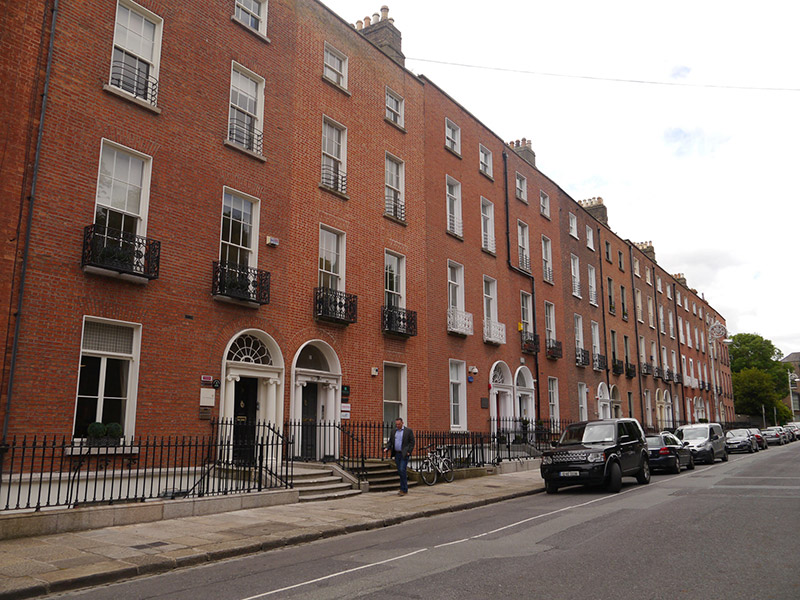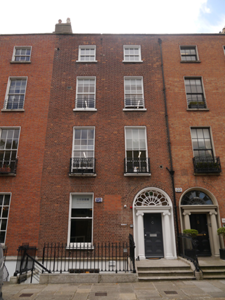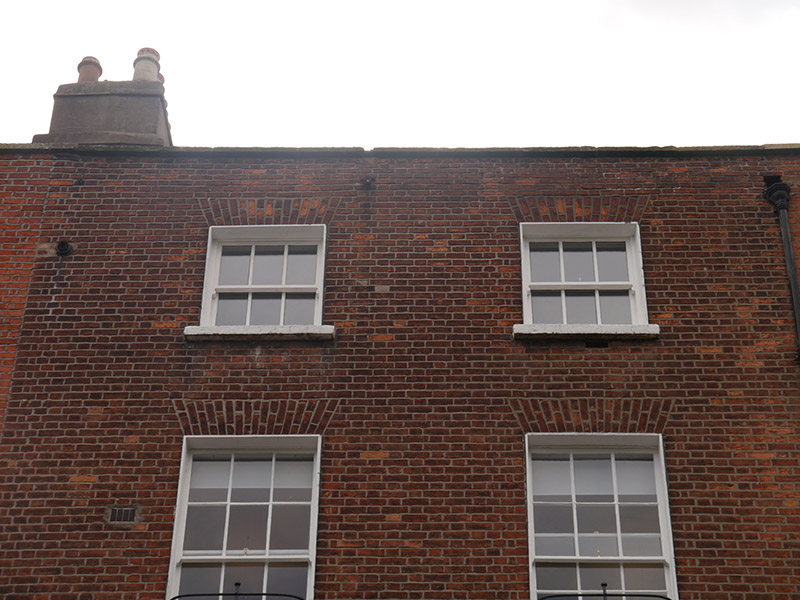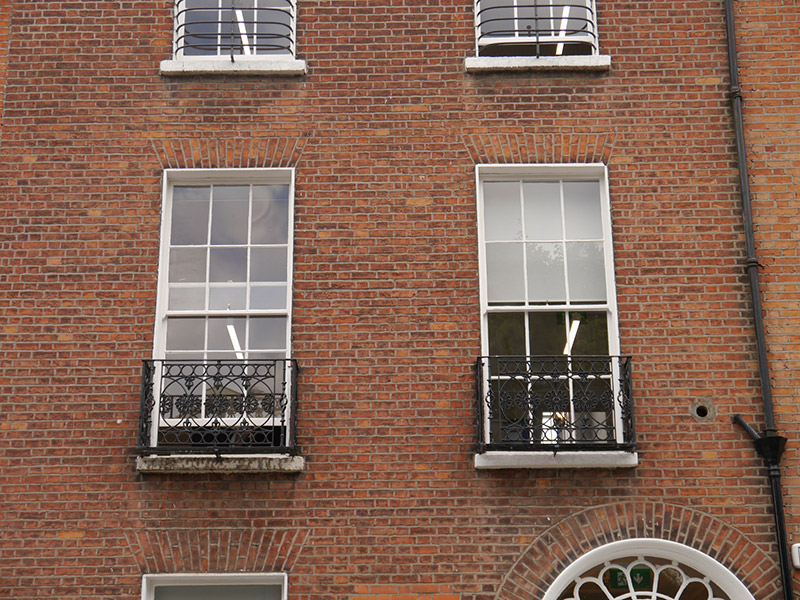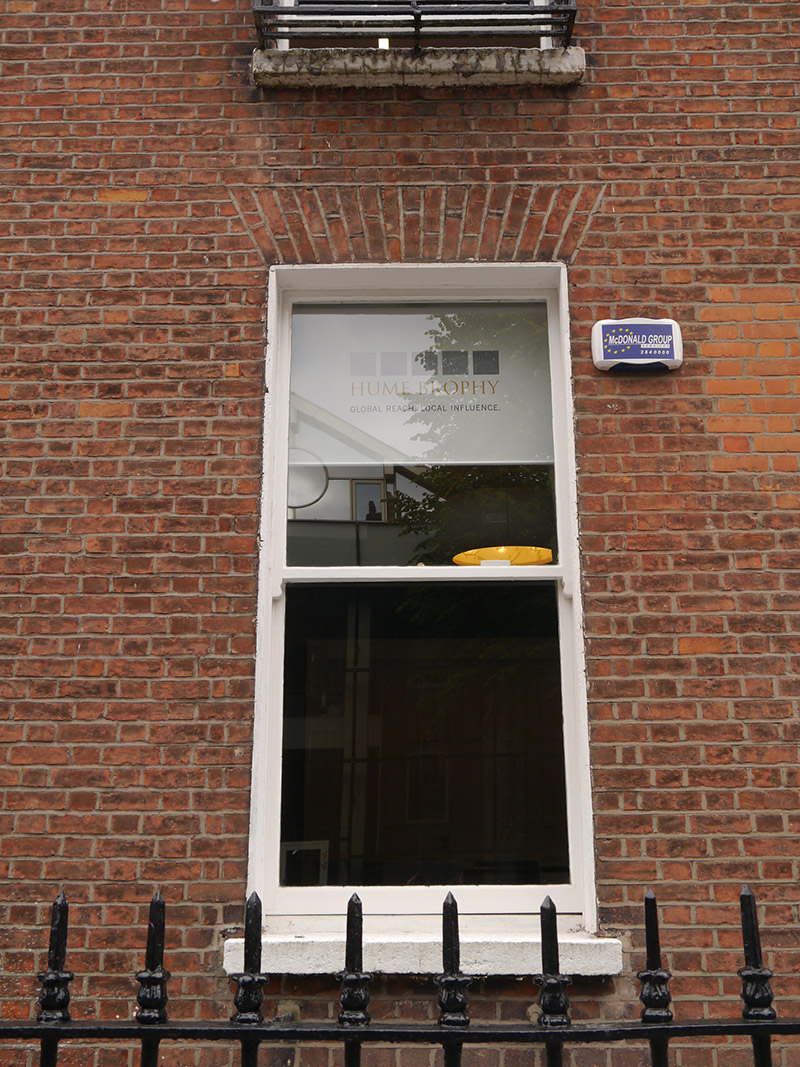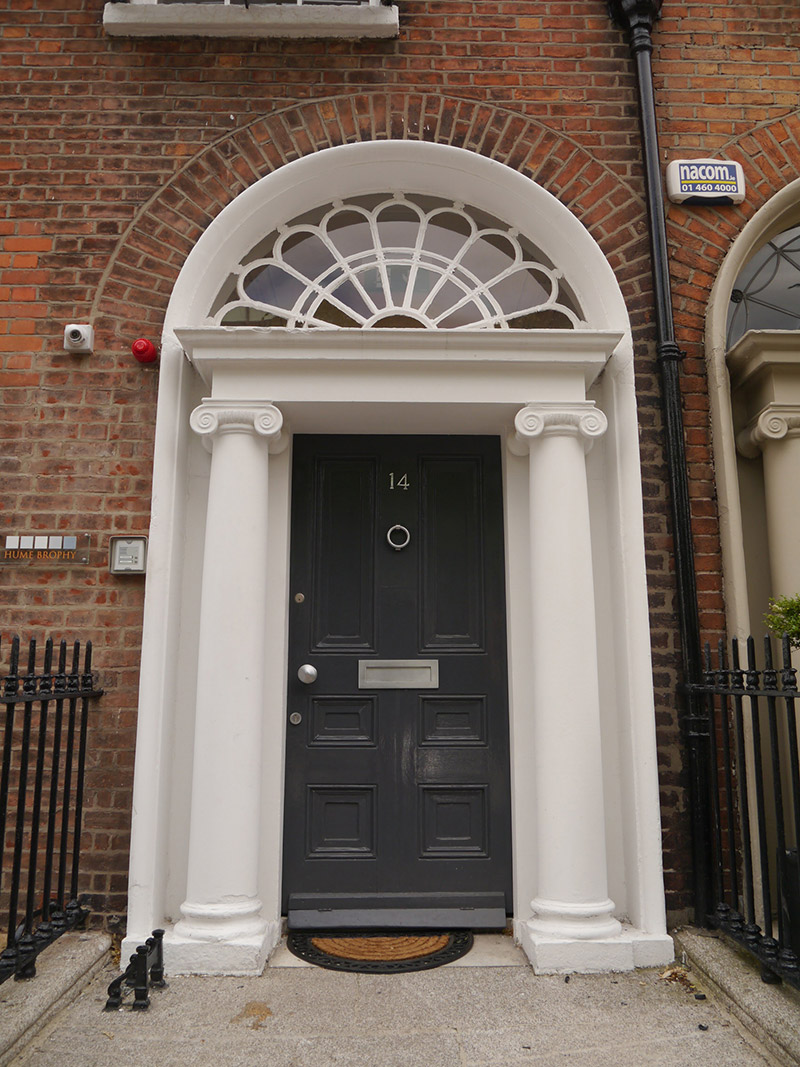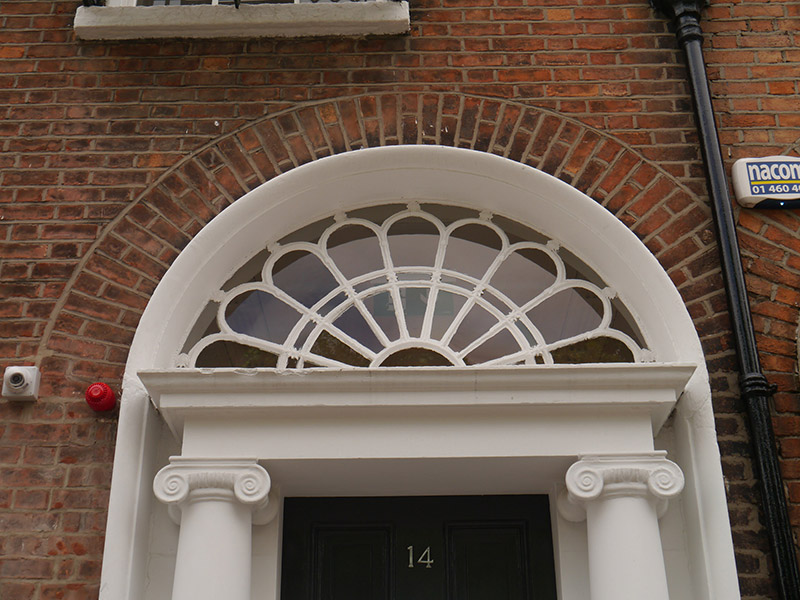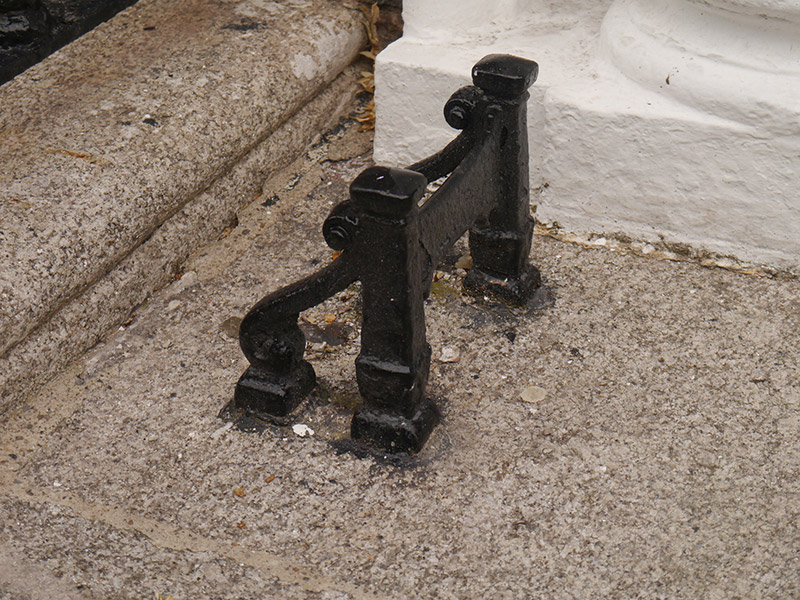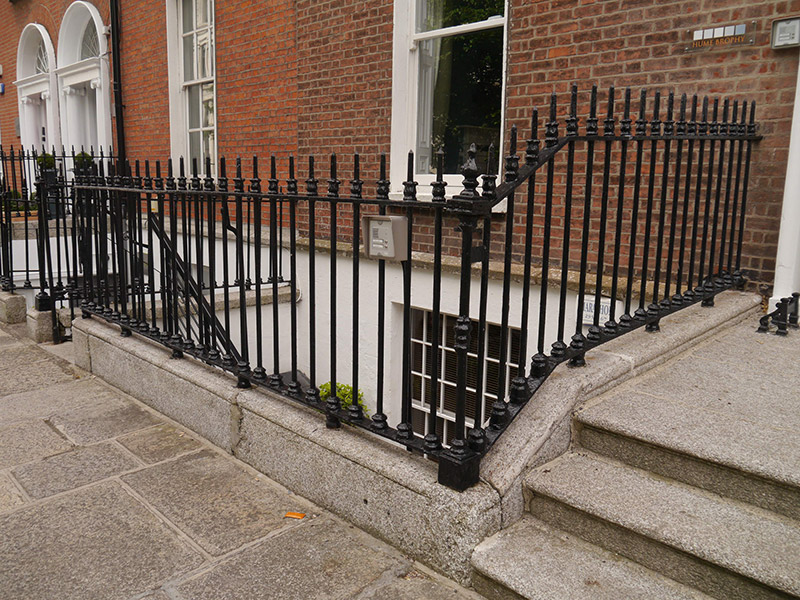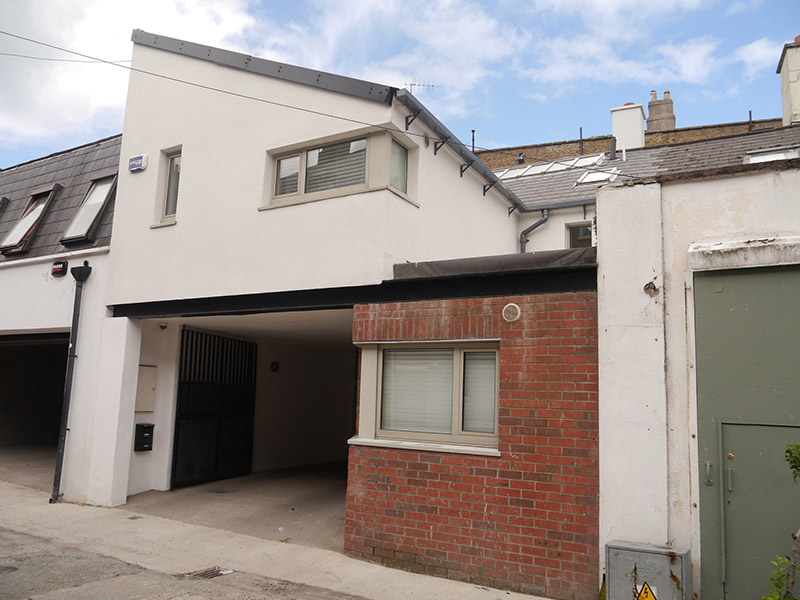Survey Data
Reg No
50100657
Rating
Regional
Categories of Special Interest
Architectural, Artistic
Original Use
House
In Use As
Office
Date
1830 - 1850
Coordinates
316962, 233153
Date Recorded
31/05/2016
Date Updated
--/--/--
Description
Attached two-bay four-storey former house over basement, built c. 1840 as one of pair (Nos. 14-15) within longer row of similar houses, and having two-storey hipped roof return to south end of rear. Now in commercial office use. M-profile slate roof, hipped to south end of rear, having brick parapet with granite coping and parapet gutters. Shouldered rendered chimneystack to north. Shared cast-iron downpipe and hopper. Flemish bond red brick walling on granite plinth course over painted ruled-and-lined rendered basement walling; rendered to basement at rear. Square-headed window openings, diminishing in height to upper floors, with painted masonry sills, patent reveals and brick voussoirs. Timber sliding sash windows with convex horns, replacement three-over-three pane to top floor, one-over-one pane to ground floor with ogee horns, replacement eighteen-over-twelve pane to basement, and six-over-six pane to middle floors. Decorative cast-iron balconettes to first floor and wrought-iron window-guards to second floor. Timber sash windows to rear, three-over-three pane to top floor, south bay having round-headed six-over-six pane window and north bay having eight-over-eight pane window to second floor and tripartite six-over-six pane below. Round-headed doorway with painted render surround and masonry doorcase comprising pro-style Ionic columns supporting plain entablature, peacock's tail fanlight and six-panel timber door with recent furniture. Granite entrance platform with cast-iron boot-scrape and three bull-nosed granite steps. Decorative cast-iron railings on moulded granite plinth enclosing basement area, with cast-iron gate. Yard to rear, with modernized two-storey mews building to rear of plot with recent extension to lane side.
Appraisal
A mid-nineteenth-century row house built in the Georgian style, displaying well-balanced proportions and a graded fenestration pattern, typical of the period. The house, along with the wider terrace and row, is attractive and relatively well-retained with original features, including a good Ionic doorcase with a good fanlight. The decorative balconettes further enhance the facade. The intact setting, with decorative railings and boot-scrape, contributes to the character of the streetscape and also to the wider historic core of south Dublin city. Linking Mount Street Crescent to Lower Baggot Street, this street was laid out by Sydney Herbert from the early 1830s.
